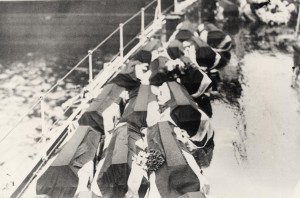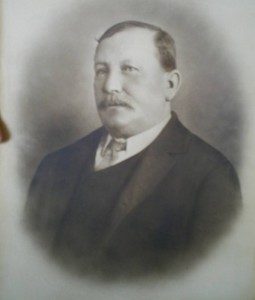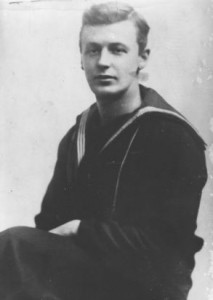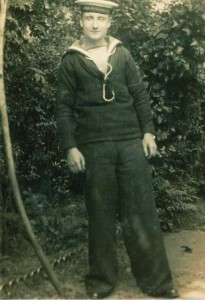
Uncle Jack Files Finnis. Died fighting for the White Russians 1919. His body returned 9 years later,
Here is a story from the author’s own family history. Tracing our own ancestry can provide real insights into some historical events which have slipped by without recognition. How many of us knew Britain was still fighting into 1919? On this occasion it was against the Russian Bolsheviks. This article is also able to show that momentous times were witnessed by ordinary people who themselves had family histories of their own.
For most of us there is a settled feeling that the Great War came to a clean end at 11 am on the 11th November 1918. Thousands of men were killed that morning and there are instances whereby some were killed after that time by an hour or two, but we think of it as a fairly clean break. It was therefore with some consternation that I found a member of our family, a submariner, being killed during hostilities in the Baltic Sea in 1919. The enemy for the Royal Navy this time not the Germans, but our former allies the Russians; or the Bolsheviks to be precise. And our allies? The White Russians and the Estonians. Britain was still dreaming of control of the seas and this time the bogeymen were the Communists who were going to prevent the free trade of all ships on the Baltic. On the basis that our friends are the enemies of the enemy, we struck up with the White Russians and thereby Britain enmeshed itself in a Russian Civil War. Needless to say this was a failure, but the story has more than a few twists and turns.
The L55 was a British submarine first launched in September 1918 and played little part on the Great War, but in 1919 was sent out to engage with two Bolshevik destroyers which were laying mines to protect Petrograd. The L55 unloaded its torpedoes and missed both targets and in so doing was pressed towards an area riddled with British mines. The L55 was sunk and the Bolsheviks claimed the kill, although there is a strong possibility the loss came by way of ‘friendly fire’ i.e. via Britain’s own mines. Whichever way, it was the end of our family member Stoker First Class, Jack Files Finnis, aged 28. It was not the end of the L55 though and not the end of Jack’s story either; roll on another seven years.
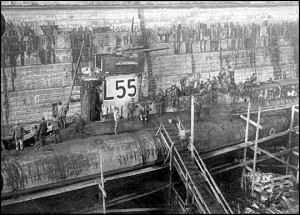
The L55 is raised from 100 feet in the Baltic Sea. The Russians are in search of submarine technology
In 1926, a trawler came across the old wreck and by 1927 Russian minesweepers confirmed the find. The now established Bolshevik government was on the hunt for new submarine technology and in 1928 announced it had successfully lifted the L55 out from a depth of over 100 feet of water. The British, aware that 42 of its souls were on board at the time of the sinking, requested the return of the bodies. This was agreed by the Russian Government, but the return would be made on to a merchant vessel as the Russians refused to have any of Britain’s destroyers in its waters. As the 34 coffins were transferred from the Truro to HMS Champion in Reval, Estonia, the local brass band played ‘Nearer my God to thee’ and the town’s flags were lowered to half mast.
The return of the bodies to England became caught up in the continuing grief of the time. The Unknown Warrior represented the servicemen from the Western Front, but now the population had 34 named sailors to grieve over. The coffins returned with great ceremony and were buried in a communal grave in the Royal Naval Cemetery Haslar in Gosport on the 7th September 1928. Two short films can be seen of the return here: Return 1 and here: Return 2. Whilst the men were laid to rest, for the L55 it was the chance to live a second life and with it, like a story straight from the mind of Stephen King, came the opportunity to kill again.
After a refit of some one million roubles, the L55 became a member of the Russian Navy and having given up many of her technical secrets, spawned a new L class of submarines for the Bolsheviks. ‘Rebranded’ the JI-55 and renamed ‘The Atheist’, the now Russian submarine entered trials in 1931. After nineteen days she sank yet again and this time took 50 lives with her. She was still not to rest and was again recovered, this time off Kronstadt. The Athiest became a training craft until 1941 when she was again damaged before being scrapped in 1953, although there is another date of 1960. The ship which raised the L55 still roams the Black Sea under the name of ‘The Kommuna’. Originally named the Volhov, she will be celebrating her 100th birthday in 2013.
Jack’s family story twists and turns almost as much as the L55. When discovering the lost servicemen in our family tree, I always look more closely at the parents. Did they die before or after their son’s death, who were the siblings and what life did they have? Jack had a dad called Henry whose young brother was a Robert. The family were traditionally nautical and came from the coastal town of Deal, near Dover in Kent. After their father died and mother disappeared, the brothers decided to move, making their way around the coastal waters, into the River Thames and eventually stopping at the tides end of Teddington. In 1911 Henry had fifteen children and including Jack, he saw eleven of them die before him. Jack’s uncle Robert had five sons; four were to die in the Great War and my son is the descendent of the only survivor, an Old Contemptible who, despite several serious injuries, made his way through the entire war from start to finish.
In November 2013 we were contacted by Judith Pearson, the grand daughter of another victim of the sinking of the L55. Judith tells us:
“My Grandfather Rupert Hammersley went down with this ship. He was born in 1894 in Hanley Staffordshire, then was living in Leicester when he married my grandmother Lillian. My mother was just one year of age at the time and grandmother brought her up alone with help of family. My mother Winnifred was their only child and passed away 2 years ago in December 7th at age 93″.


